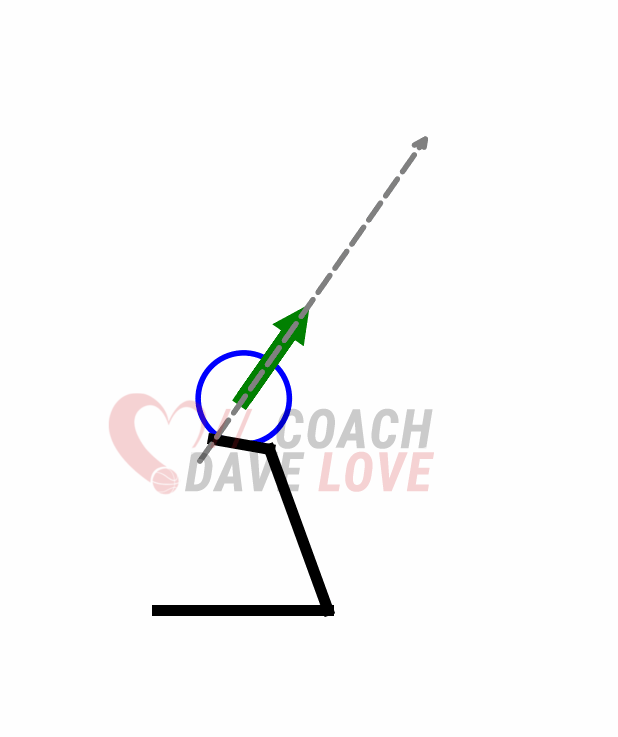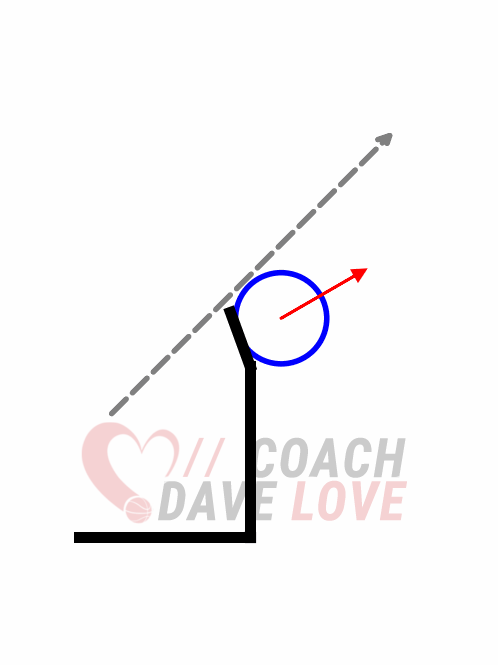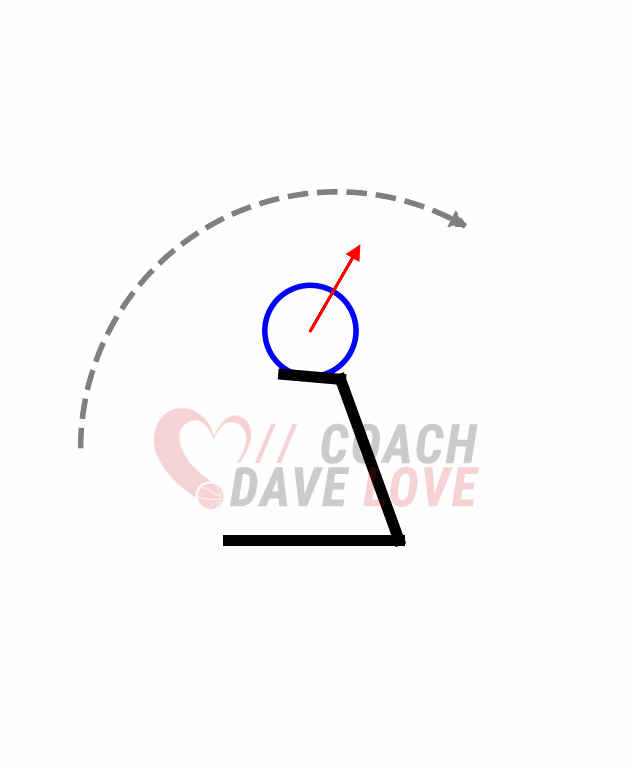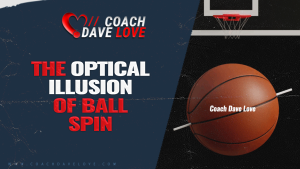In basketball shooting analysis, we often talk about alignment, release angle, and shot depth, but rarely do we dig into the deeper mechanical system that makes consistency possible: the coordination of the shoulder, elbow, and wrist. Treating the upper body as a three-joint system reveals a foundational truth: if any one joint dominates too early in the shot motion, the system becomes under-constrained — and the shooter loses the ability to apply consistent force in a consistent direction.
This concept isn’t just useful for coaching cues. It has direct implications for motion capture interpretation, force vector modeling, and predictive shot quality metrics.
The Mechanical Problem
Imagine a right-handed shooter, viewed from their right side profile. Let’s define their objective as follows:
- The ball should travel in a straight line out of the set point along a 55° launch angle (angle will vary depending on height of release and distance of shot.)
- The shooting hand should apply force at the 7:30 position on the ball — meaning slightly behind and under the center of mass.
This directional force must be maintained throughout the lift phase of the shot.

The dotted gray line shows the ideal straight-line trajectory the ball should follow out of the set point. The green arrowrepresents the direction of force applied by the shooting hand. To keep the hand in the correct position (around 7:30 on the ball) and guide the ball along this line, the shoulder, elbow, and wrist must work together in a coordinated sequence.
Mechanically, this requires that the shoulder, elbow, and wrist work together to move the ball along the target trajectory without compromising hand contact or force direction. This isn’t a trivial challenge — it’s a coordinated act of multi-joint control under tight spatial constraints.
Where Things Go Wrong
1. Early Wrist Extension
If the wrist extends too early (i.e., flattens relative to the forearm), the hand rotates around the ball, and the fingers can no longer apply upward or backward force. Instead, they begin to push through the ball, which often increases spin variability or axis tilt. The ball may still follow a decent path if the shoulder and elbow compensate, but the force vector is now misaligned, and the contact point on the ball changes prematurely.

The dotted gray line shows the intended straight-line trajectory from the set point. The red arrow represents the force applied by the shooting hand. When the wrist extends too early, the hand loses contact with the ideal 7:30 position on the ball, causing the force direction to drift and making it difficult to keep the ball on a straight path.
2. Early Shoulder Lift
If the shoulder lifts aggressively before the elbow or wrist have done their job, the ball shifts vertically. The forearm becomes more upright, forcing the hand underneath the ball. While this might maintain a clean push, it often causes the shooter to lose the 7:30 contact or curve the early phase of the shot trajectory. This introduces complexity to the shot shape and makes distance control harder.

The dotted gray line the force curving ball path of the elbow lifting too early. The red arrow indicates the direction of force from the shooting hand. When the shoulder lifts too early, the hand rotates underneath the ball, making it nearly impossible to maintain force from the 7:30 position. This disrupts both the ball’s trajectory and distance control.
3. Both Mistakes Together
This is where the system breaks down completely. The hand can no longer apply force from the correct side of the ball, and the ball can no longer travel in a straight line from the set point. From a mechanical engineering perspective, this becomes an underactuated system — one where there are not enough degrees of freedom (due to joint mistiming) to control both position and force direction independently. It’s not just inefficient — it’s unstable.
Why This Matters for Data Analysts
Most shot evaluation frameworks — even advanced ones — tend to treat joint angles and velocities as separate metrics. But the real signal lies in the coordination of those joints over time.
A shooter who maintains consistent launch angle but has fluctuating wrist timing will still show erratic force application. A player who keeps a consistent hand path but releases from different contact points around the ball is effectively changing their shot without changing the ball’s arc.
Shooting mechanics are not just about static measurements. They’re about preserving constraints across a dynamic system.
Takeaways for Analysts and Coaches
- If you’re working with motion capture or biomechanical data, consider developing metrics for temporal coordination between the shoulder, elbow, and wrist.
Create visualizations that overlay force direction vectors from hand to ball, especially through the lift and release phases.
From a coaching perspective, teach players not just what the ideal release looks like, but how to stay under the ball as long as possible while lifting along a straight path.
Variability in ball contact point or early curvature in the shot path may indicate a timing issue, not a form flaw.
Final Thought
Not all shooters struggle because of poor mechanics — some struggle because their joints are simply not firing in the right sequence. By borrowing tools from mechanical engineering and applying them to biomechanical data, we can uncover these hidden inefficiencies and give both coaches and players a clearer roadmap to repeatability.



